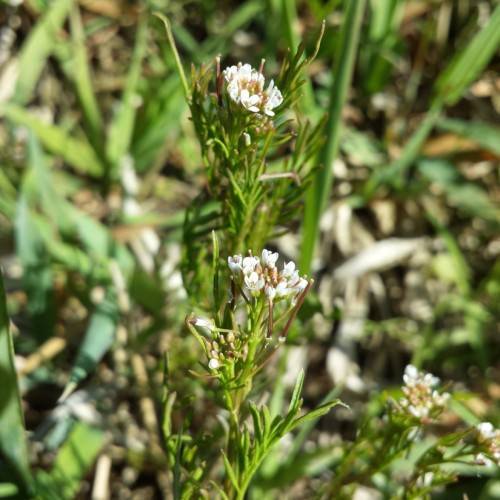
Small Flower Bittercress
Cardamine parviflora
Also Known As - Sand BittercressWatering:
Minimal
Hardiness Zone:
Sun:
full sun,part shade
Leaf:
Yes
Growth Rate:
High
Drought Tolerant:
Yes
Salt Tolerant:
Yes
Invasive:
Yes
Care Level:
Medium
watering
Western Bitter Cress needs to be watered regularly in order to stay healthy. Water once every 5-7 days in the spring and summer months, and once every 10-14 days during the fall and winter months. Water the plant near the base of the leaves to avoid getting the flowers and leaves wet. Be sure to use lukewarm water to avoid shock, and use only enough water to moisten the soil. Allow the top 2 inches of soil to dry before re-watering. Do not over-water as this can harm the root system and cause fungal issues.
sunlight
Western Bitter Cress prefers full or partial sunlight. Plants should receive at least 4-6 hours of direct sunlight daily. They can thrive if exposed to full sunlight for 8 hours or more. If the plant is not receiving enough sunlight, the flowers may be smaller and pale. During the summer and spring, Western Bitter Cress should receive full sun for most of the day. In autumn and winter, the sunlight should be more indirect and partial shade should be provided at midday.
pruning
Western Bitter Cress should be pruned immediately after flowering, or when the flowers begin to fade and the leaves have withered. Pruning should be done using sharp, clean secateurs or shears to remove flowering shoots and any dead or dying leaves. Cut the stem back to the base of the plant, making sure to leave enough foliage to ensure that the plant is able to survive and continue to flower. As Western Bitter Cress flowers over a long period, additional pruning should be performed at regular intervals to keep the plant tidy and encourage a new flush of growth and flowers.
